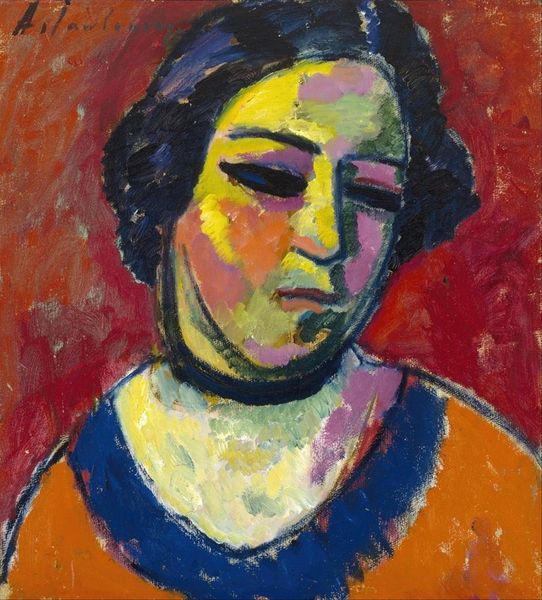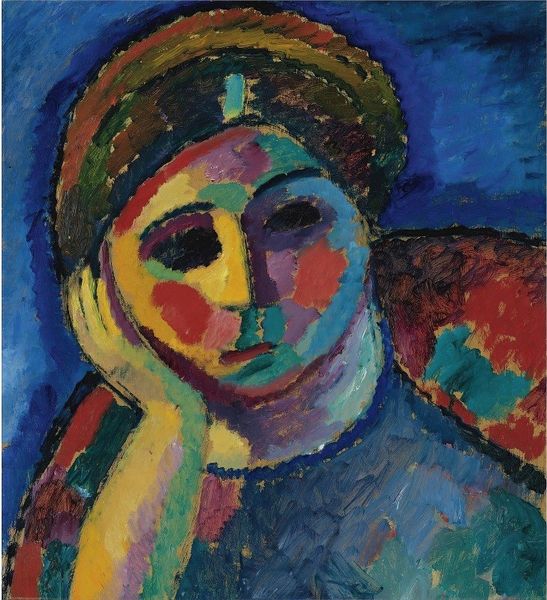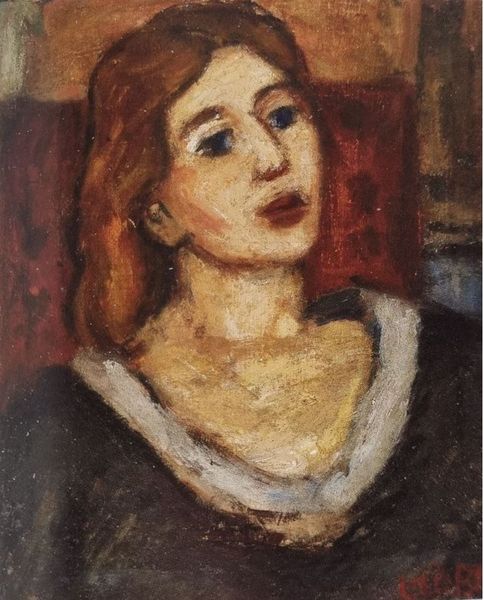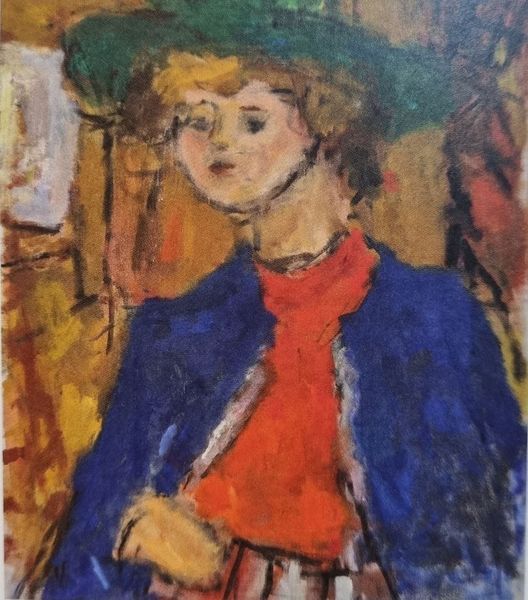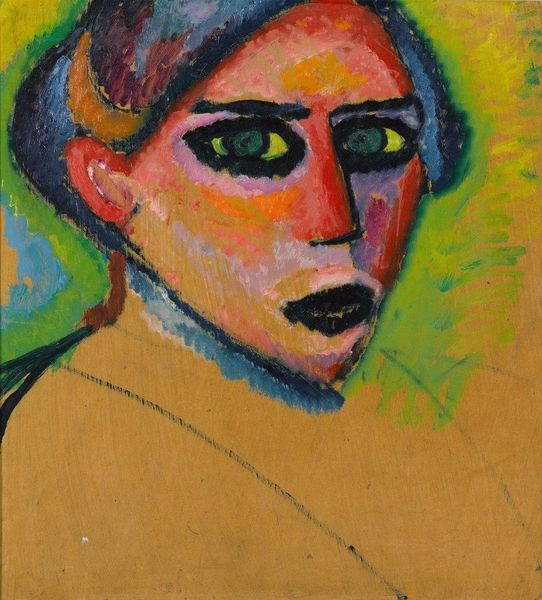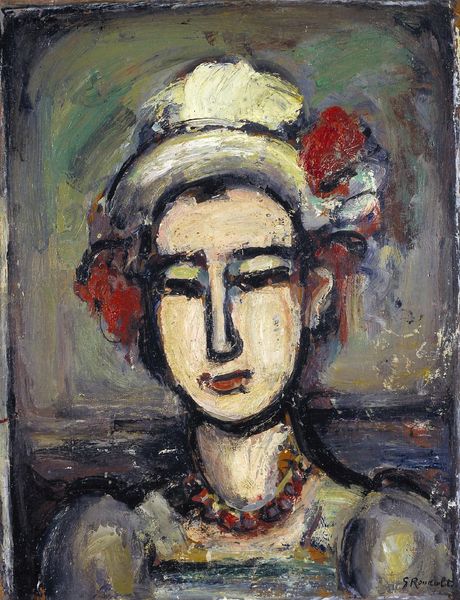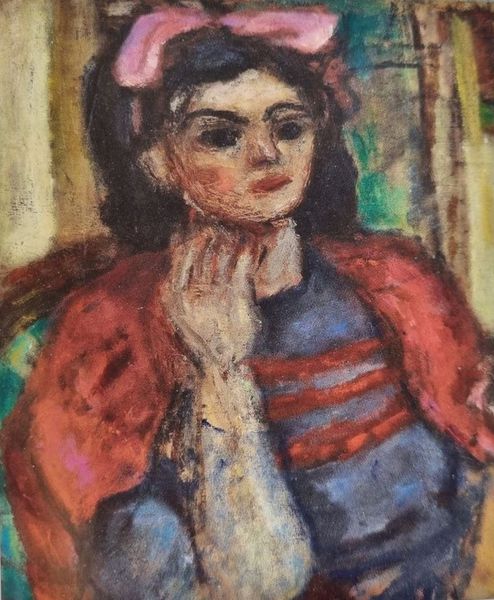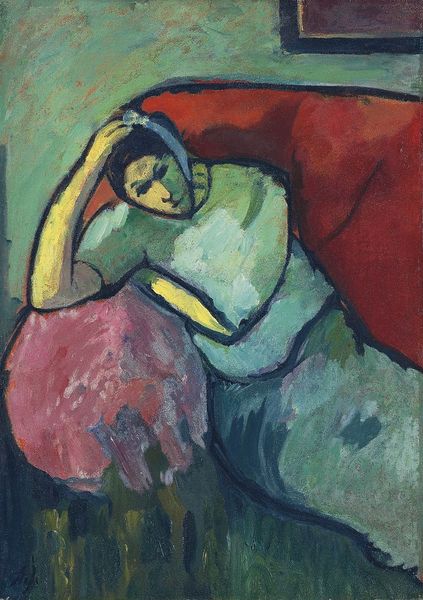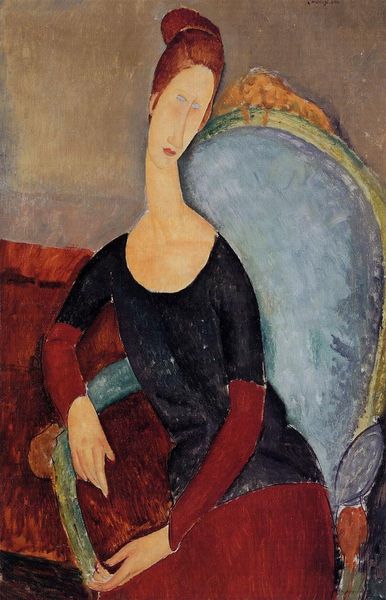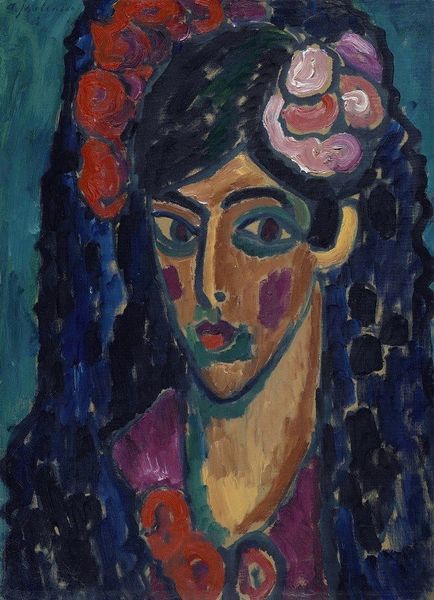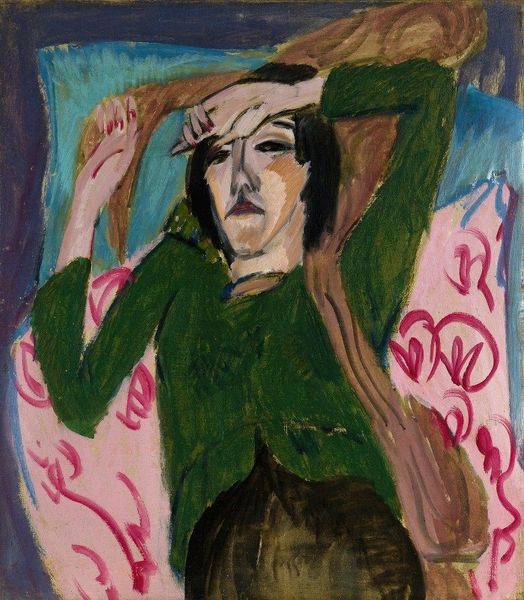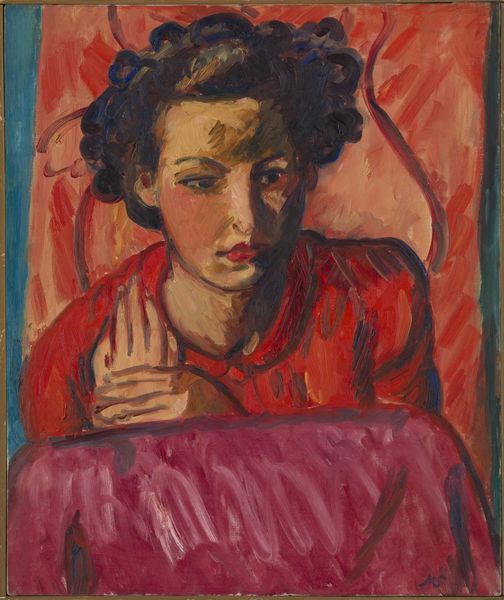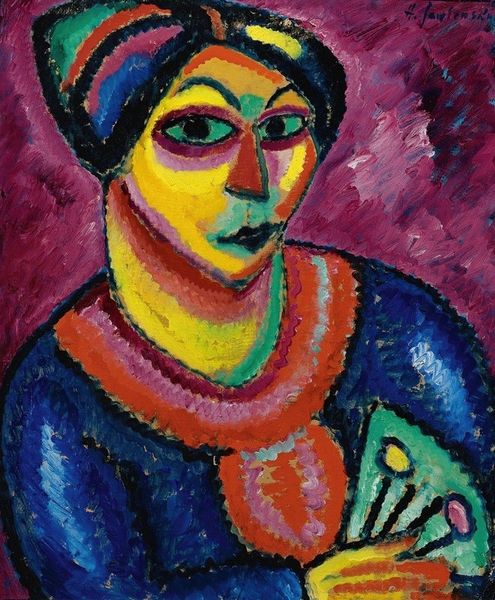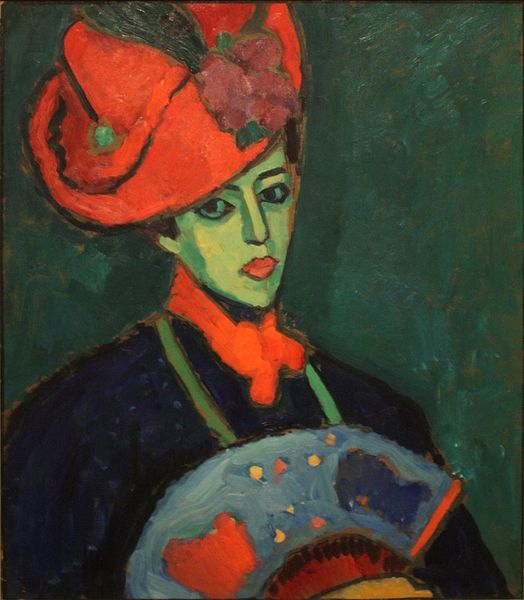
oil-paint
#
portrait
#
canvas painting
#
oil-paint
#
figuration
#
oil painting
#
expressionism
#
portrait art
Copyright: Public domain US
Curator: Here, we have Béla Czóbel’s “Resting Woman” from 1917, rendered in oil paint. Czóbel, a Hungarian artist, was associated with early Expressionism. Editor: It's immediately striking how much emotion is packed into such a simple composition. The palette of mostly muted oranges, purples, and reds create a very intimate feeling. The face is really the focal point, almost pleading, yet withdrawn. Curator: You're right to note the intimacy. This piece exemplifies Czóbel’s involvement in the Fauvist and Expressionist circles of Paris. He explored raw emotion and pushed against academic styles by depicting personal encounters. Editor: I think that comes across. Expressionism often explores the artists inner feelings. Notice the tilted head and almost sorrowful expression. The symbolism is fairly direct – it projects weariness. Curator: Indeed, but consider the time, too. 1917 was a time of considerable unrest and social disruption. I think Czobel was influenced by the general disruption as so many expressionist artists were. The garish colour, stark lines, are all evocative of that social unrest. Editor: The color certainly amplifies that mood! Color association suggests purple evokes contemplation or even mourning. This portrait, in many ways, reflects a broader sentiment than a mere "resting" posture. There is a definite feel of unease. Curator: Perhaps a feeling also triggered by how art academies dictate traditional presentation. As a protest of art tradition itself, this kind of composition becomes charged. This painting defies tradition but becomes enmeshed in an artistic era characterized by social anxieties, with institutions and norms collapsing around it. Editor: It’s compelling how the symbol of a resting figure gains power through its expressive style. Czóbel provides an interesting glimpse into how one can portray emotion with seemingly straightforward symbols—fatigue, despair. Curator: Right. We must consider both the aesthetic revolution and how Czobel viewed it from his place and time. Understanding this informs not just our appreciation of Czobel's talent, but of Expressionism as a reaction to the tumultuous realities of its day. Editor: A fusion of visual language and personal, intimate sentiments.
Comments
No comments
Be the first to comment and join the conversation on the ultimate creative platform.
